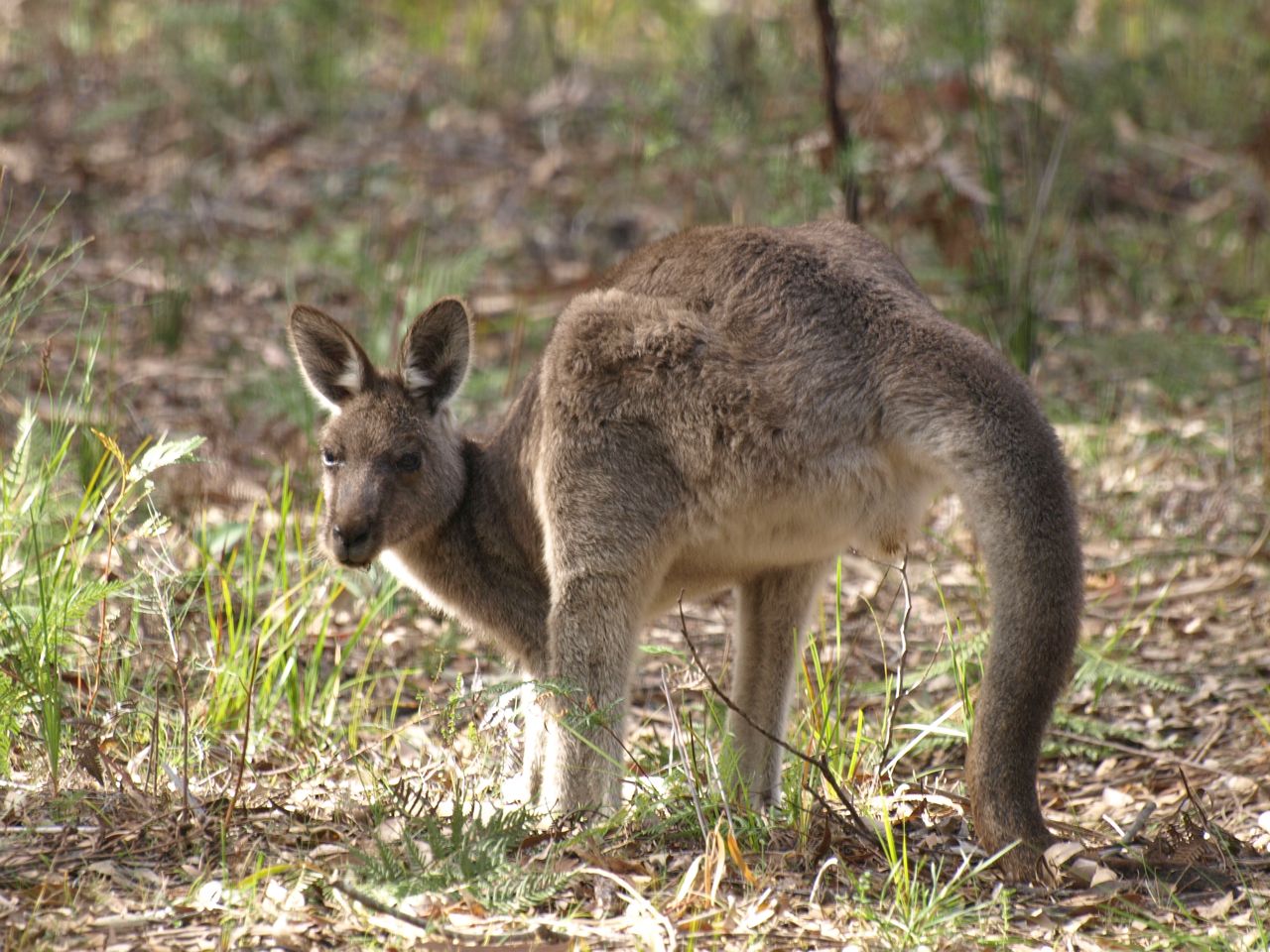Reproduction in our largest animal - Macropus giganteus

Most people know that the Eastern Grey Kangaroo, like other macropods, is capable of a neat reproductive trick - having a foetus in the womb and a suckling young in the pouch at the same time. But if you're like me, you won't know exactly how this works. After a bit of research I think I have a better handle on it.
From Birth to Weaning
Let's start with the situation shown below - a female with a young joey which has not yet left the pouch.
This photograph was taken in April but you can see the same thing at any time of the year. The Eastern Grey breeds year round, although there is a peak of births in Summer. While Mum wanders around feeding, the young in the pouch can also nibble at the grasses. But it is dependent on the milk it suckles at a teat in the pouch.
The joey will leave the pouch for the first time at around 9 months after birth but will return to that secure refuge for another 2 months after that. The young are very wobbly when they first leave the pouch but quickly become excellent jumpers - as shown by this hilarious little guy bravely exploring the world 100 metres away from Mum. It quickly returned to the pouch when I made my presence felt.
Here is a photo of the same mother and joey (on the left) taken two and a half months after I shot the videos above. The joey has left the pouch for good, but will continue to suckle milk until it is 9 months old. Amazingly, it uses the same teat it used while still in the pouch. It still keeps the company of its mother for some time after it has been weaned. The large male on the right was hanging around in the hope of siring another progeny.
Let's go back and investigate the birth of a joey, depicted on the timeline below as No.1. This shows the period from birth to when No.1 is weaned, at around 18 months old.
Like other marsupials, the Eastern Grey Kangaroo is a tiny, under-developed creature at birth. It weighs less than a gram and is the size (and shape!) of a jellybean. It is pink, hairless, blind and has not yet developed hindlegs. Compared to "proper" mammals, like mice, cats and humans, it is at a very immature embryonic stage. Nevertheless this little guy knows exactly where it needs to go, using its forelegs to crawl from its mother's urogenital opening to the pouch.
Once inside the pouch, it attaches to one of the teats and begins to suckle milk. This is a different teat to that used by a young joey at foot and has a different milk composition.
From Conception to Birth
So what is happening earlier, before birth? Rather than follow No. 1 back to its beginning, let's start with the next offspring, which I'll call No.2.
Most macropods enter estrus (become sexually receptive) immediately after giving birth. The Eastern Grey, on the other hand, usually enters estrus only if it loses its pouch young or otherwise waits until just before the young leaves the pouch. However, sometimes it will mate again just four months after giving birth - for example, if feeding conditions are favourable. This scenario is shown on the timeline below.
Mating leads to fertilisation of an ovum released from the female's ovary. The fertilised egg of No. 2 divides repeatedly over a 7 day period until it reaches a developmental stage called a blastocyst. At this time it takes the form of a hollow ball of several hundred cells - think of a tennis ball about 1/3mm in diameter. The embryo then stops developing and enters a dormant state, called diapause (indicated by the dotted green line in the above diagram).
It remains in diapause, within the wall of the uterus, until No.1 leaves the pouch permanently. This event triggers a surge of progesterone which kickstarts development of embryo No.2. Within 36 days it completes embryonic development, whereupon it leaves the uterus, enters the pouch and follows the same sequence as No.1 - in, in/out and finally out of the pouch for good.
Add another Embryo
Now let's imagine that the female kangaroo enters estrus and mates again, four months after No.2 is born. Embryo No.3 is conceived, as shown in the timeline below.
It goes through the same developmental sequence as its siblings, No.1 and No.2. Same old, same old. But an interesting fact emerges. For a brief, but exhausting couple of months, indicated by the yellow box, the mother is sustaining three different offspring at various stages of development - No.1 suckling outside the pouch (high maintenance), No.2 suckling in the pouch (very high maintenance) and No.3 in arrested development in the uterus (low maintenance). Whew!
Finally, let me finish with a gratuitous but cute video. It shows two young male Eastern Greys practising for the day when they will face off in serious combat for the opportunity to engage in this reproduction game. Boys!






